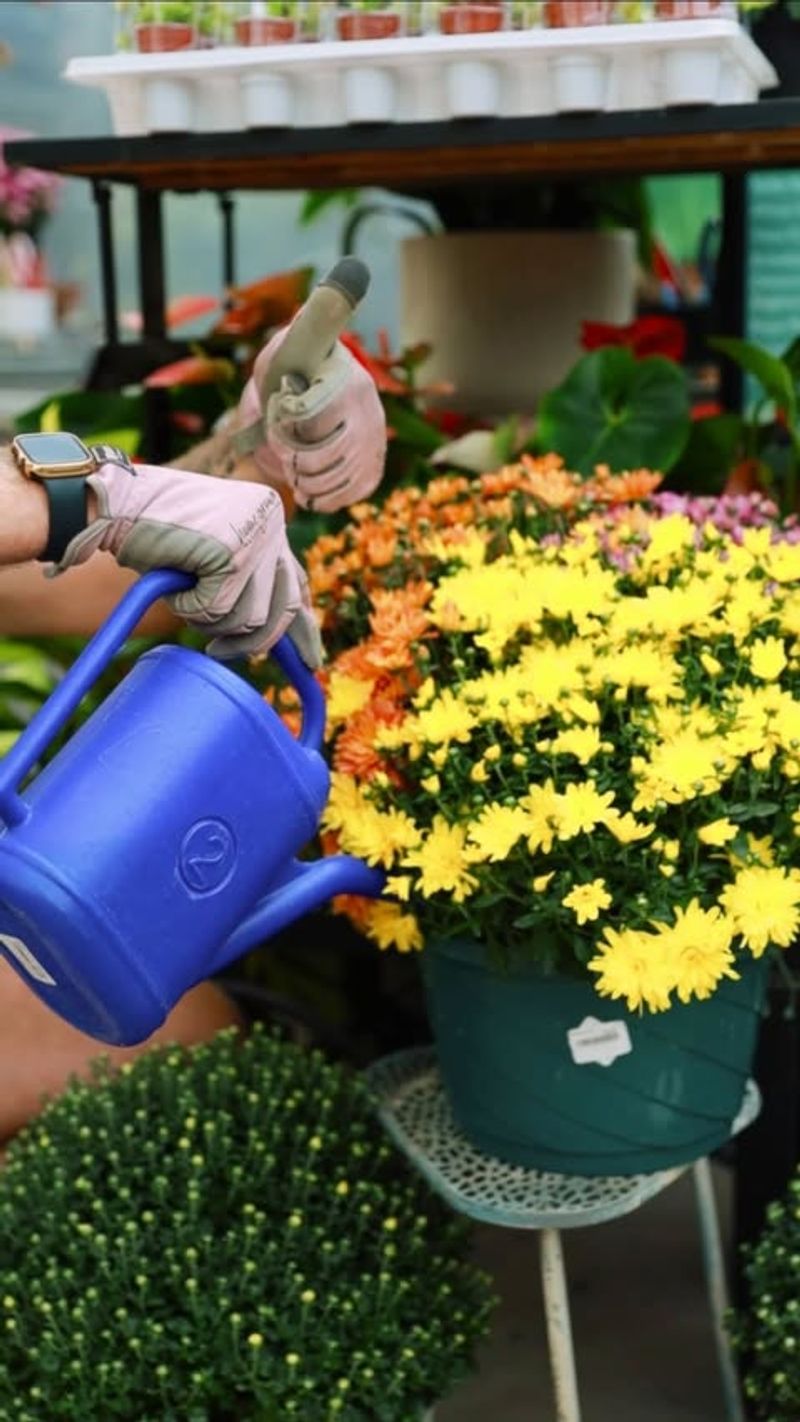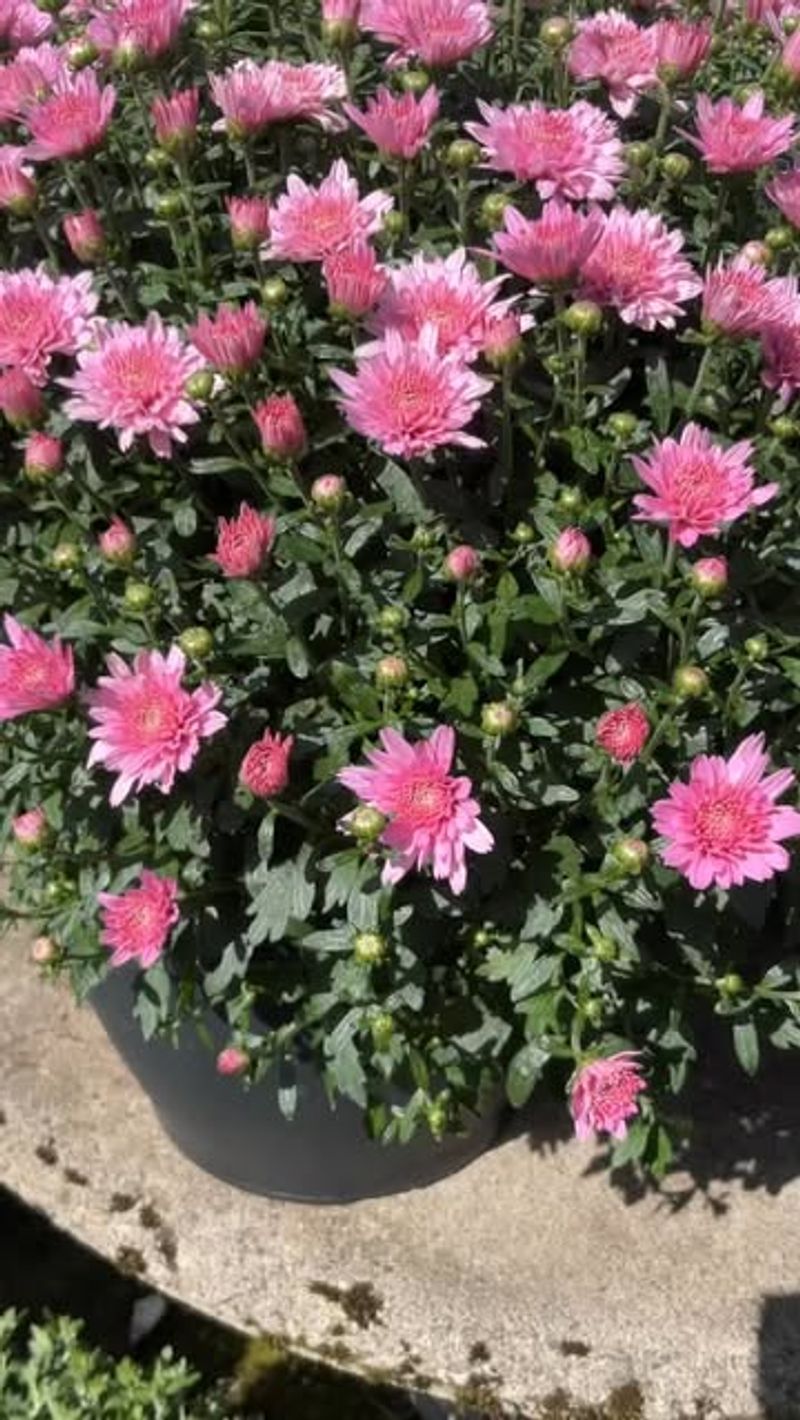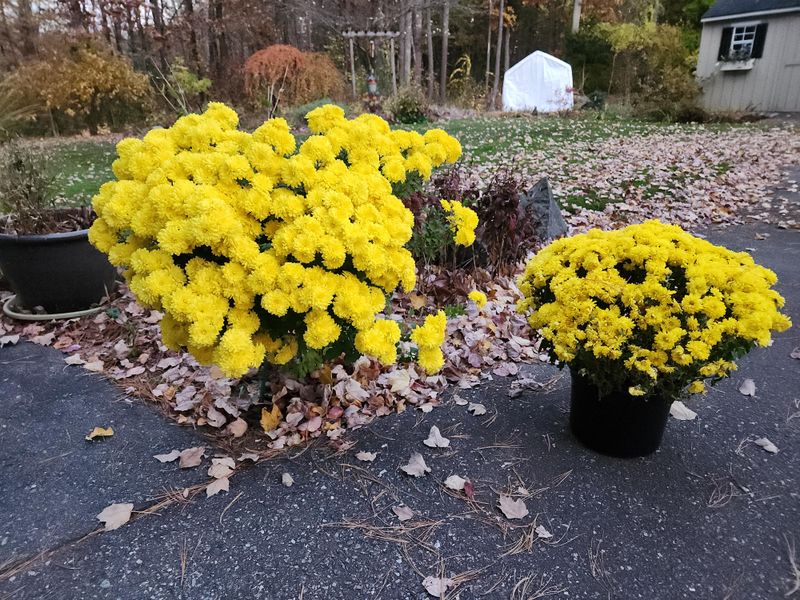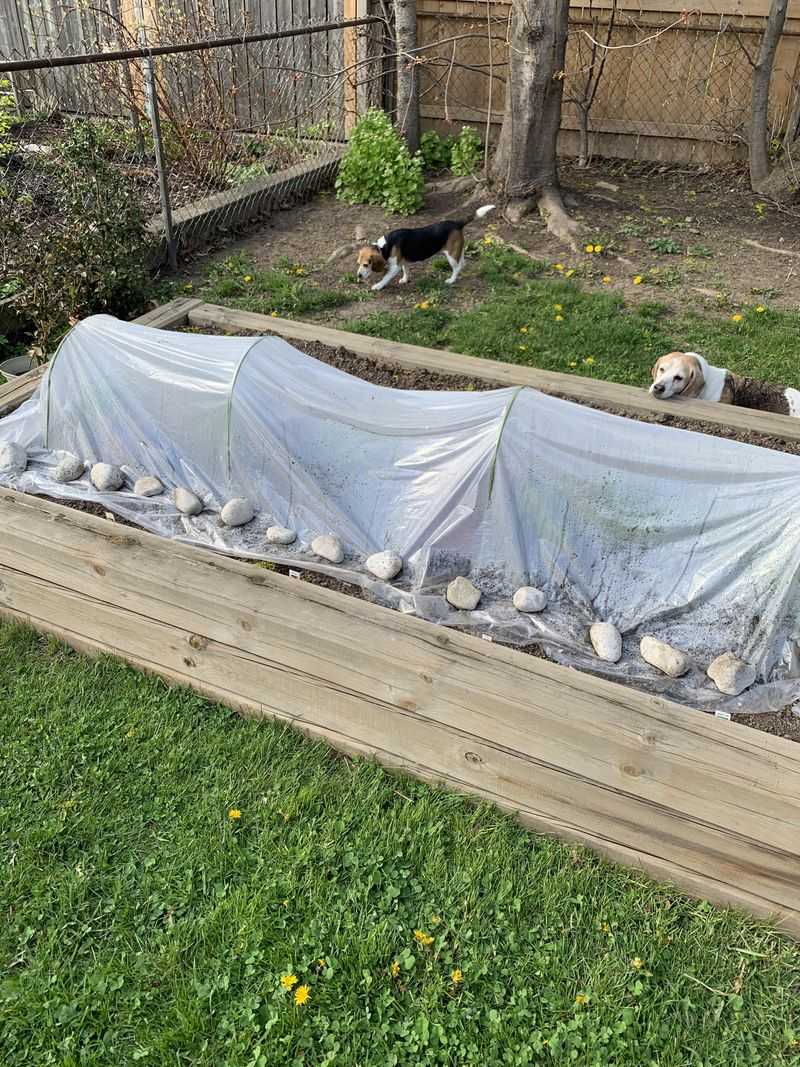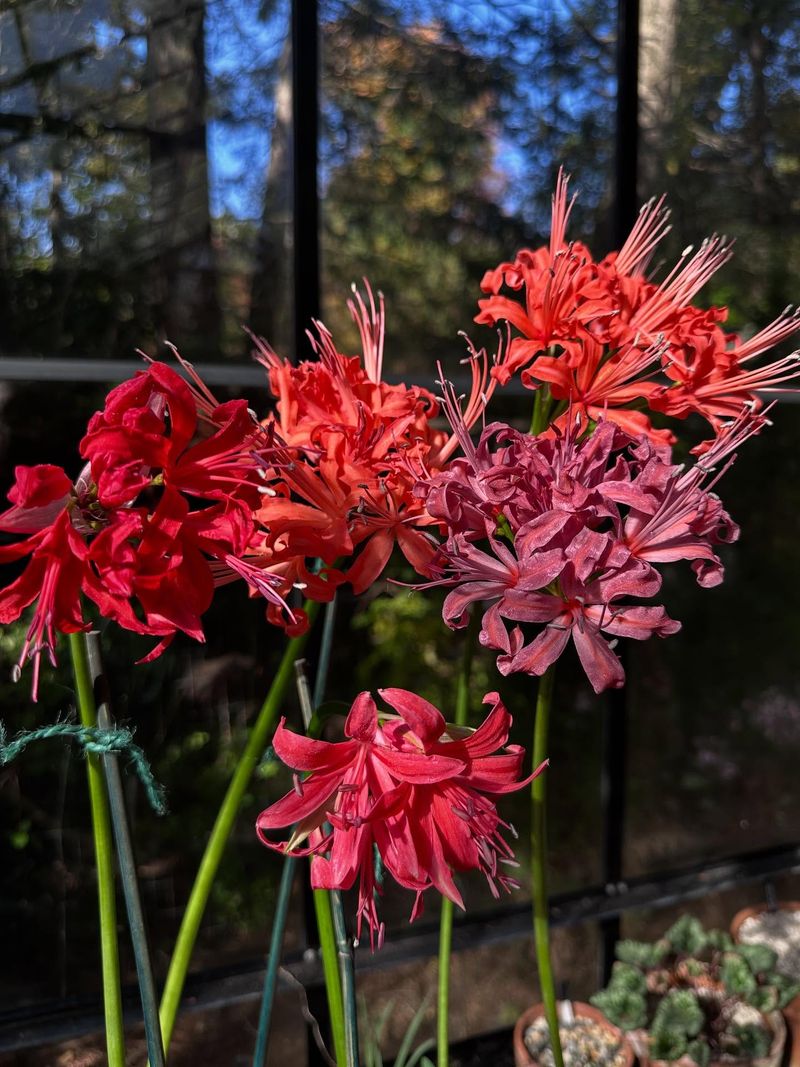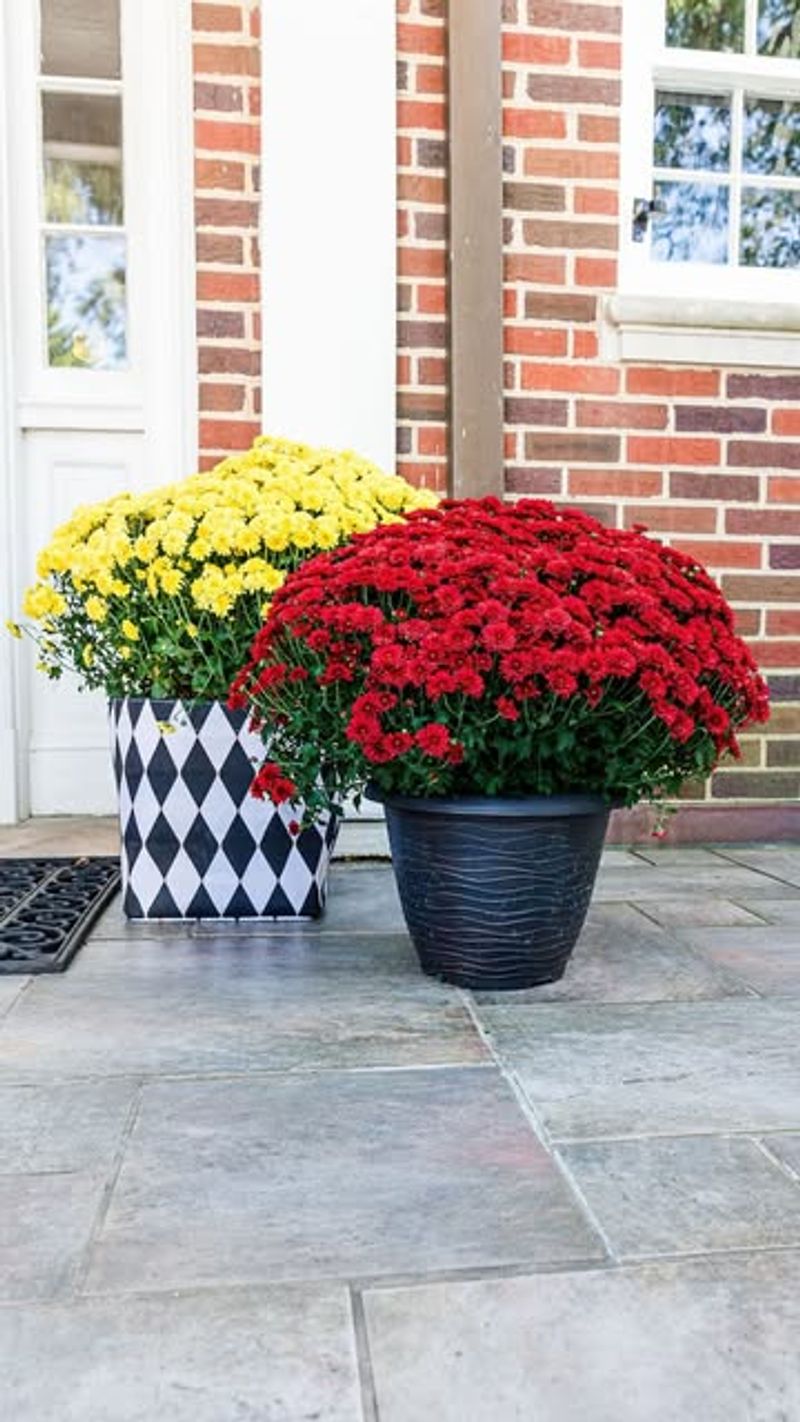Mums are the ultimate fall favorite in Connecticut, bursting with color just as the leaves start to turn. But keeping them looking fresh all season can feel like a challenge once the chill sets in.
A few simple tweaks to your care routine can make all the difference between crunchy leaves and lush blooms. Here’s how to help your mums stay gorgeous and full of life from the first frost to the last.
1. Water Them Consistently Every Morning
Morning watering gives your mums the moisture they need before Connecticut’s sunny days heat up. Check the soil daily by sticking your finger about an inch deep—if it feels dry, it’s time to water.
Pour water slowly at the base of the plant, not on the leaves or flowers. Connecticut’s fall weather can be unpredictable, so adjust your watering schedule if it rains.
Consistent moisture prevents wilting and keeps blooms looking fresh throughout the season.
2. Pick The Perfect Sunny Spot
Sunlight is essential for keeping mums healthy and blooming strong. Most varieties need at least six hours of direct sun each day to thrive in Connecticut’s autumn climate.
Place your potted mums where they’ll catch morning and afternoon rays. South-facing porches or patios work wonderfully for this purpose.
Too much shade causes leggy growth and fewer flowers, while proper sun exposure keeps plants compact and colorful all season long.
3. Deadhead Faded Blooms Regularly
Removing spent flowers might seem like extra work, but it actually encourages new blooms to appear. Pinch off brown or wilted flowers right where they meet the stem using your fingers or small scissors.
Connecticut gardeners who deadhead regularly enjoy fuller, longer-lasting displays. This simple task takes just a few minutes every few days.
Your mums will redirect energy into producing fresh flowers instead of making seeds.
4. Feed Them With Balanced Fertilizer
Nutrition plays a huge role in keeping mums vibrant throughout autumn. Use a balanced, water-soluble fertilizer every two weeks to give plants the nutrients they crave.
Look for formulas with equal parts nitrogen, phosphorus, and potassium. Connecticut’s soil can vary, so container plants especially benefit from regular feeding.
Stop fertilizing once temperatures consistently drop below freezing, as plants naturally slow their growth during late fall.
5. Protect From Early Frost Damage
Connecticut’s first frost can sneak up quickly, especially in October. Cover your mums with lightweight fabric or old sheets when frost warnings appear in the forecast.
Remove covers once morning temperatures rise above freezing. Potted mums are more vulnerable than garden-planted ones since their roots have less insulation.
Moving containers closer to your house or under an overhang provides extra protection during chilly nights.
6. Choose Hardy Varieties For Your Climate
Not all mums are created equal when it comes to surviving Connecticut’s changing weather. Garden mums labeled as hardy perennials handle temperature swings better than decorative florist types.
Look for varieties specifically bred for outdoor growing in cooler climates. Local Connecticut nurseries often stock plants suited to the region’s conditions.
Hardy mums have stronger root systems and better cold tolerance, giving you gorgeous color that lasts longer.
7. Ensure Proper Drainage In Containers
Soggy soil is one of the fastest ways to kill your mums. Make sure every container has drainage holes at the bottom to let excess water escape.
Connecticut’s fall rainstorms can saturate pots quickly, leading to root rot. Elevate containers slightly using pot feet or bricks to improve airflow underneath.
Well-drained soil keeps roots healthy and prevents the dreaded crispy, brown leaves that signal trouble.
8. Mulch Around Plants For Insulation
Adding a layer of mulch around your mums helps regulate soil temperature during Connecticut’s unpredictable fall weather. Spread two to three inches of shredded bark or leaves around the base.
Mulch also retains moisture and protects roots from temperature swings. Keep mulch away from stems to prevent rot and disease.
This simple step extends blooming time and keeps plants healthier as nights grow colder throughout the season.
9. Avoid Overcrowding In Planters
Cramming too many mums into one pot looks tempting at first, but it causes problems down the road. Plants compete for water, nutrients, and airflow when squeezed together.
Connecticut’s humid fall mornings can promote fungal diseases in crowded containers. Give each plant enough space to spread and breathe freely.
Proper spacing means healthier mums with better blooms that stay beautiful all autumn long without turning crispy or brown.


